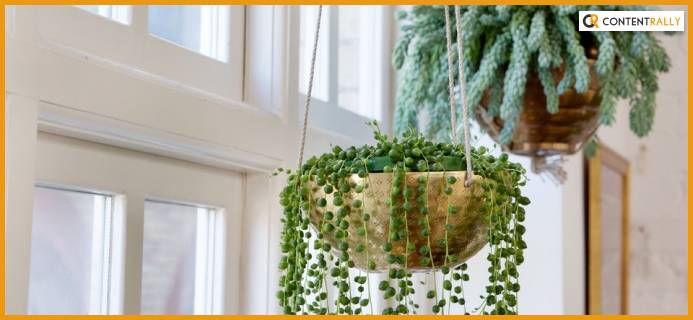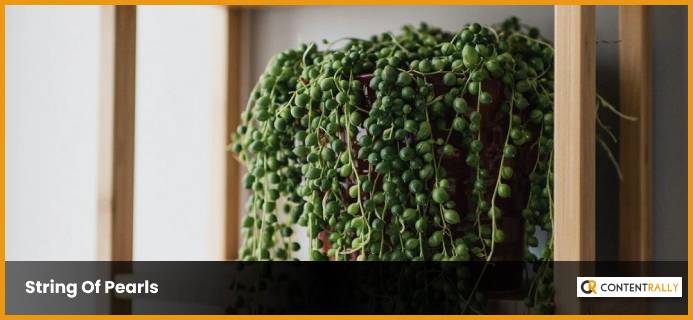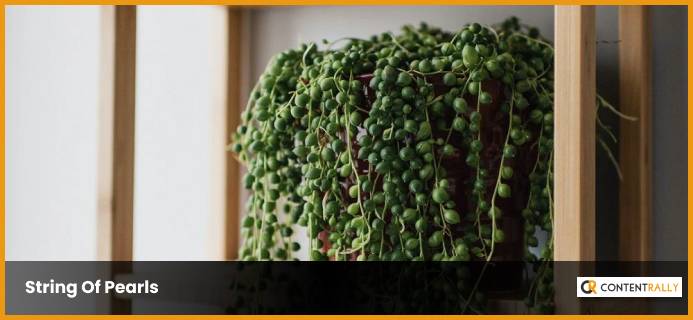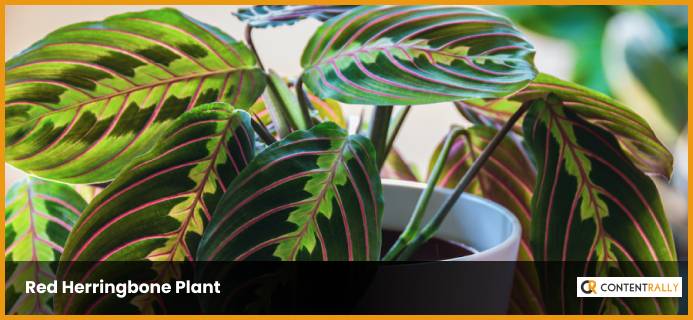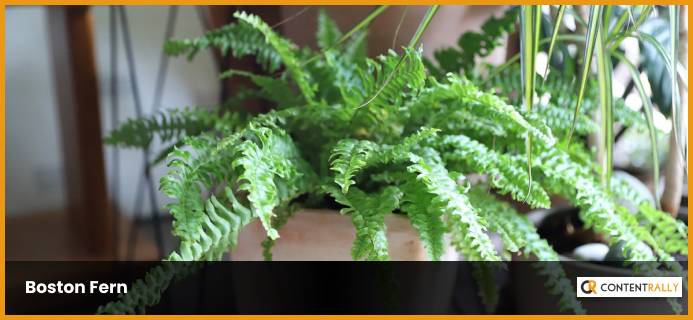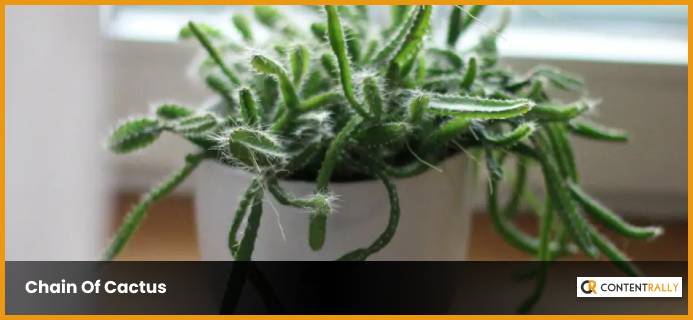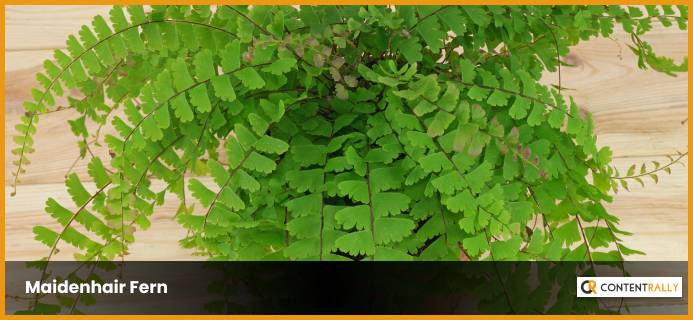Your dream house needs some ornaments and decorations to stand out as the queen of all houses in your neighborhood. With trailing indoor plants, you can add the green your beautiful home was missing all this time.
For the urban dwellers, it is almost impossible to live inside the greenery. But, using indoor trailing plants, you can bring the green into your house.
Indoor plants are the lively jewelry of your home decoration, and it is no secret. It is only with the green plants that the brick walls and your house’s concrete get the touch of life.
Hanging a few vines here and there from the pots can add the touch of the goddess of green vines to your home.
You can keep a trail of the indoor plants on the railing of the staircase. You can hang some of them from the porch ceiling of your house. Maybe you can keep one or two containing some low-light plants for the interior?
As you start to live with the green, you add extra life and vivacity to your life. So now, if I have got you even a little bit interested in the indoor trailing plants, allow me to introduce you to the best trailing indoor plants that you can decorate your house with.
10 Best Trailing Indoor Plants
You can invite the wild indoors with these incredibly pretty green trailing indoor plants mentioned in this article.
1. Trailing Indoor Plants: Golden Pothos

Golden pothos is just as beautiful as healthy for your surrounding environment. Not only can they thrive in the low light, but they also keep the air around you pure and refreshed.
They help eliminate odors and cleanse the air within your home with formaldehyde, benzene, and carbon monoxide.
If you have to stare at the computer screen all day long, you can look at them to reduce the irritation.
As for decorating the interior, it is one of the most beautiful trailing indoor plants that you can hang from the ceiling of your room or the balcony.
Read More: Grow these flowering plants in your home garden
2. Trailing Indoor Plants: Satin Pothos

Scindapsus pictus‘ Exotica’ or satin pothos is another vine you can keep within your home. It grows slowly, and the beautiful green leaves are splashed with silver color.
This plant takes only a little water to grow within low light. When 2 cm of the compost goes dry, you can water them. Even NASA recommends these plants for the refinement of indoor air.
The satin pothos are easy to propagate, and they are low maintenance. Many people keep them as good luck charms. If you have a flower vase with a stand in the drawing-room, you can place one of these plants there.
3. Trailing Indoor Plants: String Of Pearls
One of my favorites, Senecio Rowleyanus, or String of pearls, is another pretty member that you can add to your drawing room. The skinny stems of this plant grow green bubbles as if they are green pearls.
During winter, tiny white flowers grow out of the String of pearls plants. These are cascading plants, and they can be the attraction of your home decor.
It is a pretty trailing indoor plant that grows in low light and dry air. I will suggest you make a trail of these indoor green pearls. You can hang them from baskets or use a shelf to arrange a trail of baskets containing the String of pearls.
4. Trailing Indoor Plants: Burro’s Trail
You can easily grow, propagate, and maintain the Burro’s trails. However, if you are worried about your children and pets, then allow me to assure you that these trailing indoor plants pose no harm to them.
They are nonpoisonous plants and are easy to grow and maintain. You can lay them on top of a pot full of compost and grow them quickly within a few days’ notice. The plant also requires minimal watering. You can water them when the 2 cm of the compost is dry.
You can decorate the interior with a few small baskets of the Burro’s tail hanging from the ceiling. Or, you can also keep them on top of the tables in the dining room.
You May Like To Read: 4 Essential Tools Needed to Maintain Your Garden in the Winter
5. Trailing Indoor Plants: Red Herringbone Plant
Maranta leuconeura, Red herringbone plant, also known as the prayer plant, is another beauty to decorate your interior.
The attractive patterns of this plant will amaze you both during the day and at night. Growing this plant may take a little experience. They require only a little water, but you need to water these plants when the pot is dry.
The prayer plant is one of the most common trailing indoor plants, which you can place on the table.
6. Trailing Indoor Plants: String Of Hearts
Also known as the Chain of hearts, sweet vines, rosary vines, String of hearts is another pretty indoor trailing plant. These are easy to grow and propagate.
They have tiny leaves with pink and purple shades, making your interior look prettier as they grow and thrive across your balcony. In addition, they create the best contrastive combination with a white wall or ceiling.
If you are a beginner and not much of a career giver, the String of hearts will bear with you. This plant grows within low light and requires minimum water.
7. Trailing Indoor Plants: Boston Fern
Do you want to keep a vase full of green and lively ferns on the tea table? If your need is something similar, you can consider giving the Boston ferns someplace within your house.
You can hang them from the ceiling or shelves. But unlike the other plants here, they are attention seekers. They need your daily care; from ample lights, humidity and regular watering are a must.
Do you have space beside your window? If you do, you can put them there. They shed dead leaves, so you also need to groom them occasionally. They are also excellent givers. And they keep the interior air fresh and maintain the moisture within the house.
8. Trailing Indoor Plants: Chain Of Cactus
Rhipsalis paradoxa minor, or the Chain of cactus, grows pretty-looking white flowers during the spring. However, the winter stimulates the growth of these pretty flowers. These trailing interior plants are rich in antioxidants and vitamin C.
These are best for big hanging pots. You can keep a wide vase full of the Chain of cactus and let them grow wildly. They require minimum water and light, although you need to be a little experienced to grow them properly.
You May Also Like This: Best Material for Garden Sheds: A Guide for Everyone
9. Trailing Indoor Plants: Grape Ivy
These trailing indoor plants are pretty underrated. The grape ivy is a good air purifier; they require moderate or low light to thrive within your interior. They also have antioxidant and anti-inflammatory benefits.
You can hang one or two baskets of the grape ivy inside and be amazed as they keep shining while getting older.
10. Trailing Indoor Plants: Maidenhair Fern
The cousin of the Boston ferns, not too distant from its relative, the maidenhair ferns take after the qualities of the Boston ferns. They also require lots of care, ample light, and regular watering.
They indeed maintain the various hues of greenkeeping a dazzling look within the interior of your house.
These trailing indoor plants possess anti-thyroidal, anti-diabetic, antifungal, wound healing, and anti-hair loss properties. So not only are they pretty, but they are quite beneficial for your health as well.
Let The Trailing Indoor Plants Decorate Your Home
Most of these plants only take a little care and light to grow healthy within the interior of your house. You can go from little pots of green plants to large vases full of them to decorate your interior wildly. These plants have some health benefits like refreshing the interior air or cleansing it. They are also good at keeping the air humid.
If you are looking for such plants, I suggest you choose from any of these vines, pothos, cactuses, and ferns. Also, if you think that we have missed out on any valuable plant, you can let us know through the comment.
Read Also:
- Garden Edging for Beginners
- How To Arrive At The Perfect Choice Of A Potting Bench For Your Gardening
- How To Install Artificial Grass In Your Garden – Installation Guide Step By Step













